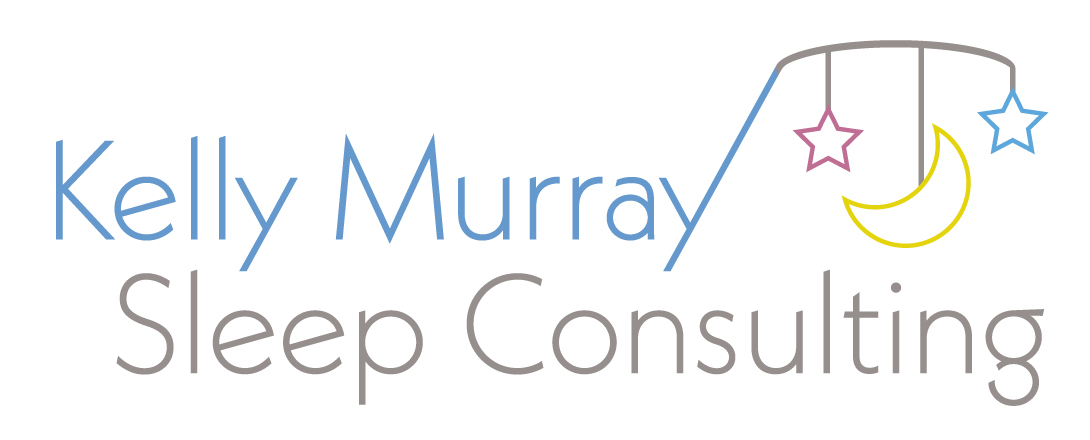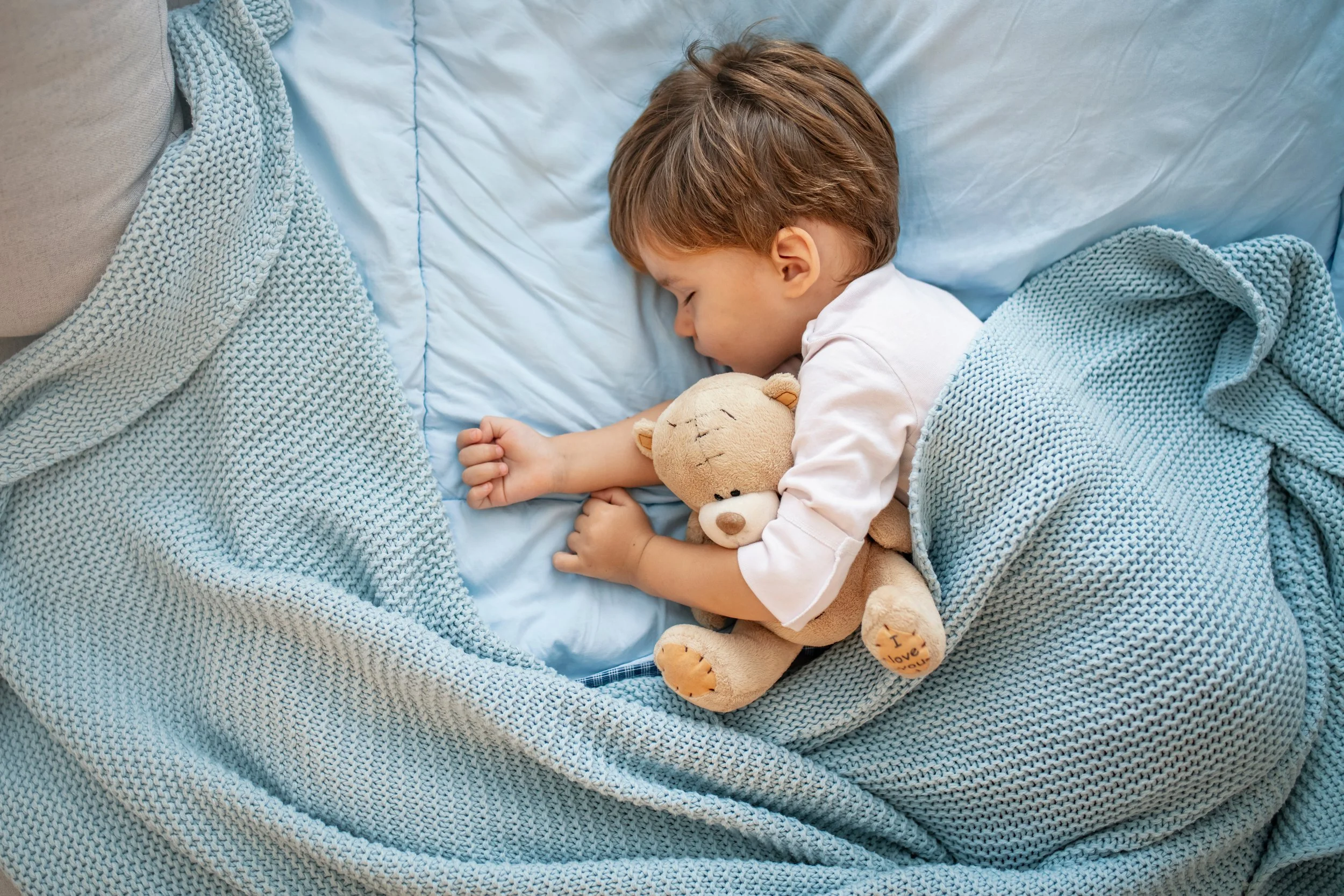Watch the vlog version of this post here! ⇧
If your baby's having issues either falling asleep, staying asleep, or trouble with both, chances are you've been told, "It's time to sleep train."
I know from first-hand experience that those two words can elicit a lot of fear in the hearts of parents. It certainly did for me when I was told by my pediatrician that it was time to sleep train my son, Braden (you can learn more about my personal experience getting him to sleep through the night here.)
In this article, I’m going to answer the question, “What is sleep training?” and share with you some of the most popular sleep training methods so that you can decide if it's a good fit for your family, and which technique will work for your parenting style. Because that's what's key. If you can find a technique that you can be committed to, then you're going to see success.
First, what is sleep training?
Sleep training is basically teaching your baby to fall asleep independently without the use of a sleep prop. You may wonder...
WHAT EXACTLY ARE SLEEP PROPS AND WHY SHOULDN’T I USE THEM TO HELP MY BABY SLEEP?
Sleep props can be a number of things, such as: a pacifier, rocking to sleep, feeding to sleep (breastfeeding or bottle-feeding), bouncing to sleep — anything that's external to your child's own internal skill set.
Of course, a baby is not going to be happy about learning this new skill — especially if their parents have been putting them to sleep for months on end. The results? The baby is going to cry, or protest. (I like to call it protesting because that's really what it is.) The baby is communicating to their parents, "Hey! You forgot something! You put me in my crib awake! That's not what I'm used to. I want you to put me to sleep."
(BTW, there are plenty of excellent products to help set the stage for your baby to help them sleep that do not disrupt their natural ability to sleep. You can check out our a list of these items here.) Now, let’s get back to sleep training without sleep props…
Although it’s perfectly acceptable to use a sleep prop with a newborn, now that your baby is older and the props are causing issues, let’s talk about teaching them how to fall asleep on their own.
The good news is that your baby doesn't need you or a sleep prop to put them to sleep. Babies are all capable of falling asleep independently after they're four months old. They just need to learn how.
What you need to do is figure out what sleep training method you're going to use. You want to choose a method that you're going to feel comfortable with and you know you can remain committed to.
Popular Sleep Training Methods
I'm going to share with you four of the most popular sleep training methods and what’s involved. I'm sure there are other methods on the market, but I want to stick to these as they are certainly ones that you’ll come across in your sleep training research.
Pick Up, Put Down Sleep Training Method
WHAT THIS LOOKS LIKE:
You put your baby in their bed or crib, and once they start crying, you pick them up.
You walk them around until they're nice and relaxed, and then you put your baby back down.
If your baby cries again, you may wait a little bit, pick your baby back up and walk your baby around until they're relaxed again.
You keep doing this until your baby falls asleep.
EFFECTIVENESS
I typically find this method works best in babies under four months. For babies over four months, it can be a little overstimulating, so just something to keep in mind.
“Stay In the Room” or “Chair” Sleep Training Method
I use this a ton in my practice. This is what I used with my son Braden. I find that it works really well with parents who, like me, are very sensitive to crying.
WHAT THIS LOOKS LIKE:
Put your baby in their crib, and then you sit in a chair right next to the crib.
You provide periodic comfort and support.
Over the course of about a week, you slowly move your chair further and further away from your baby until you're no longer in the room and you're able to put your baby in their crib and walk out.
EFFECTIVENESS
Usually by the time you’ve left the room (about a week’s time), they're falling asleep on their own, quickly and without a lot of fuss.
The “Leave and Check”, “Graduated Extinction”, or “Ferber” Sleep Training Method
There are a lot of different aliases for this one. I feel like this method has as many aliases as Al Capone did. But anyway, they all mean the same thing. For our sake, let's call it Leave and Check.
WHAT THIS LOOKS LIKE:
You put your baby in their crib and you walk out.
Once your baby starts protesting, you wait a set period of time, and you go back in, offer your baby some comfort, and then leave the room again.
Then you wait for the set period of time and see if they start crying again.
If they do cry again, you go back in and offer more comfort.
You keep doing this in-and-out repetition until your baby falls asleep.
EFFECTIVENESS
I find this method is best for babies who may not take well to their parents being in the room (it may be way too overstimulating), or for parents who may feel more anxious about the crying if they’re in the room with their baby.
The “Cry It Out” (CIO) Sleep Training Method or “Extinction”
I think this is what most people think of when they think of sleep training.
WHAT THIS LOOKS LIKE:
Cry it out is when you put your baby in their crib, you walk out, and then you don't go back in.
You allow them to learn to self-soothe and put them self back to sleep on their own.
EFFECTIVENESS
The crying isn't going to harm your baby, just know it's not something you need to resort to. However, if this is something you feel is best for your family, then go for it! More power to you! There's a ton of research out there that proves that the crying that happens during Cry It Out is not detrimental.
Personalized Sleep Training Methods So It Works For You!
I hope that these descriptions help you to better understand the various methods of sleep training so that you can decide which method you're going to be able to stick with. If you can remain consistent, you are going to see success. I just know it!
There are a ton of books on the market that will provide you with in-depth detail on how to execute each technique, but if you want to work with a certified sleep consultant, the nice thing about that is that we can customize each technique to fit you and your child. So if you're interested in learning more about working with me or my team, you can schedule a 15-minute Discovery Call — free of charge, no strings attached! You can also view a list of frequently asked questions for sleep training here→
UPDATE: We now offer an online program to sleep train your baby on your own! Learn The Murray Method on-demand and teach your baby (4-24 months old) to become an independent sleeper. Click here to check out The Murray Method for Babies→
LET’S GET YOU TUCKED IN
Book a 15-minute sleep call today. We’ll chat about your current situation and how my program could benefit you.
Sweet dreams.
Kelly Murray is a certified sleep coach and an award-winning pediatric sleep consultant based in Chicago offering sleep coaching services nationwide.














